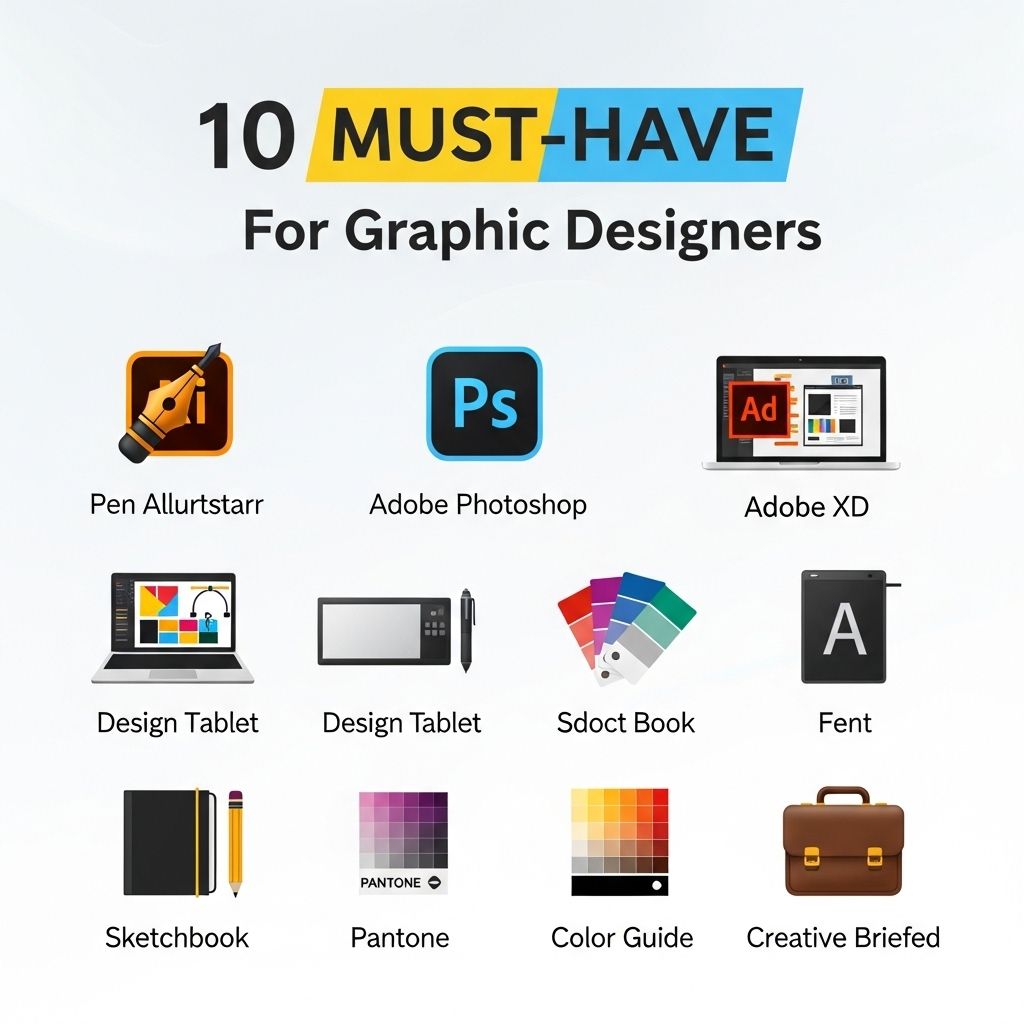In the world of graphic design, a portfolio is more than just a collection of work; it’s a powerful tool that reflects an artist’s style, skill, and creative vision. A stunning graphic design portfolio not only showcases completed projects but also tells a story about the designer’s journey, ethos, and versatility. In this article, we will explore key elements of an effective portfolio, showcase some outstanding examples, and provide tips for aspiring designers looking to elevate their work.
Key Elements of a Graphic Design Portfolio
A well-curated graphic design portfolio typically includes a variety of elements that contribute to its overall appeal. These components help in demonstrating the designer’s capabilities and unique approach to design.
1. Diverse Range of Work
Including a variety of work can display versatility and adaptability. Consider incorporating:
- Branding Projects
- Print Media
- Digital Graphics
- Web Design
- Illustrations
- Social Media Campaigns
2. Case Studies
Detailed case studies can provide insight into the design process. Each case study should outline:
- The problem statement or design challenge.
- The process taken to arrive at the final solution.
- The final deliverable with high-resolution images.
- Client feedback or results achieved.
3. Personal Projects
Including personal projects can help potential clients or employers understand the designer’s passions and creativity beyond standard work. These projects often showcase a designer’s unique voice and style.
4. Professional Presentation
The presentation of the portfolio is just as important as the work itself. Ensure that:
- The layout is clean and easy to navigate.
- Images are high-quality and properly sized.
- Text is concise and descriptive.
- Branding elements (logos, color palettes) are consistent.
Outstanding Graphic Design Portfolio Examples
Looking for inspiration? Here are some stunning graphic design portfolios that exemplify creativity, professionalism, and unique presentation styles.
1. Adham Dannaway
Adham Dannaway’s portfolio is a captivating blend of design and coding. His use of animations and interactive elements makes the browsing experience engaging. Key features include:
- Responsive design.
- Unique mouse hover effects.
- Showcase of both digital and print work.
2. Dan Matutina
Dan Matutina’s portfolio stands out with its vibrant color palette and playful illustrations. The layout is intentionally minimalist, allowing the artwork to take center stage:
- Intuitive navigation.
- Use of case studies to explain his design process.
3. Masha Zhdanova
Masha’s portfolio is a perfect example of a well-organized layout that highlights her illustration skills. Some notable aspects include:
- Clear categorization of work.
- Rich storytelling in her case studies.
- Incorporation of video content to showcase her process.
4. Jessica Walsh
Jessica Walsh’s portfolio is a blend of contemporary aesthetics and innovative design. She effectively uses:
- Bold typography.
- Dynamic use of color and imagery.
- Group projects showcasing teamwork.
Tips for Creating an Effective Portfolio
Now that you’ve seen some inspiring examples, here are some actionable tips for creating your own graphic design portfolio.
1. Tailor Your Portfolio to Your Audience
Consider the type of clients or employers you want to attract. Curate your work to match their preferences and needs. For instance:
- If you’re targeting tech startups, include digital product designs.
- For branding agencies, showcase your logo and brand identity projects.
2. Keep It Updated
As you grow and develop as a designer, so should your portfolio. Regularly update it with new projects and remove outdated work. A fresh portfolio reflects your current skills and trends in design.
3. Seek Feedback
Before launching your portfolio, seek feedback from peers or mentors. Constructive criticism can help you identify areas of improvement and refine your presentation.
4. Utilize Online Platforms
Consider leveraging platforms such as Behance, Dribbble, or Adobe Portfolio to showcase your work. These platforms not only help you reach a wider audience but also provide networking opportunities within the creative community.
Conclusion
A stunning graphic design portfolio can make a world of difference in how potential clients or employers perceive you as a designer. By focusing on key elements such as diversity of work, case studies, and professional presentation, you can create a portfolio that truly reflects your abilities. Take inspiration from the examples shared, implement actionable tips, and watch as your creative journey unfolds.
FAQ
What makes a graphic design portfolio stand out?
A stunning graphic design portfolio combines creativity, originality, and professional presentation, showcasing a diverse range of projects that highlight the designer’s skills and style.
How can I create an effective graphic design portfolio?
To create an effective graphic design portfolio, select your best work, organize projects in a logical flow, include case studies that explain your design process, and ensure high-quality visuals.
What should I include in my graphic design portfolio?
Your graphic design portfolio should include a variety of work such as branding projects, illustrations, web designs, and any collaborative efforts, along with a brief description of each project.
Is it important to update my graphic design portfolio regularly?
Yes, regularly updating your graphic design portfolio is essential to reflect your latest work, skills, and trends in the industry, demonstrating your growth as a designer.
How can I showcase my graphic design portfolio online?
You can showcase your graphic design portfolio online through personal websites, platforms like Behance or Dribbble, and social media channels to reach a wider audience.
What are some common mistakes to avoid in a graphic design portfolio?
Common mistakes to avoid in a graphic design portfolio include overcrowding with too many projects, poor image quality, lack of organization, and not providing context for your work.




